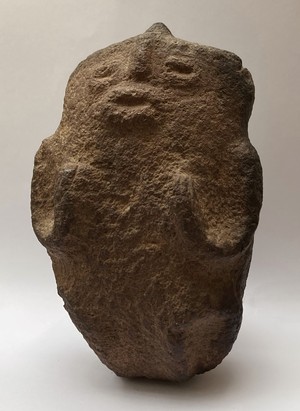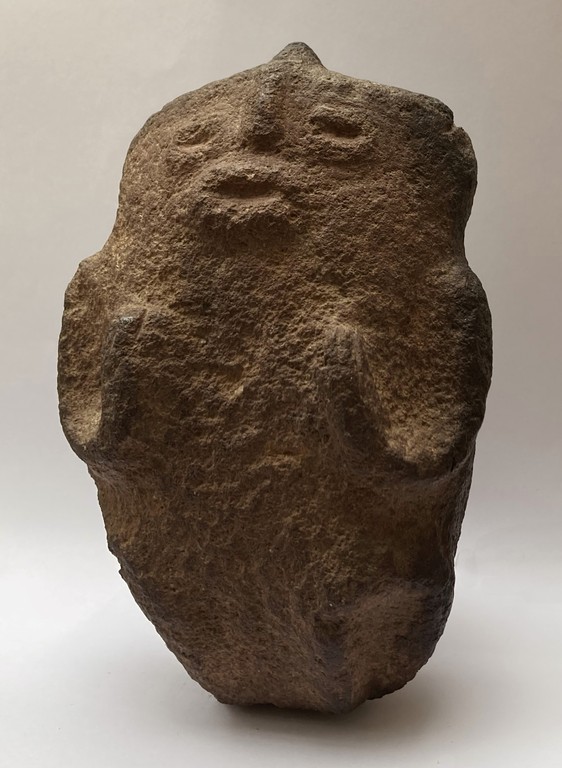?Cypriot Anthropomorphic stone figure: Early or Middle Chalcolithic (2900-2700)
This unique small basalt sculpture is most probably Cypriot, but this attribution relies to a large degree on provenance. It was owned by a family in the Larnaca district of Cyprus who handed it on to the grandmother of Ms D Mavroleon, the last owner. The grandmother and her husband and family brought it to the UK on emigrating in the 60s. None of the family collected antiquities and it was not much valued by the family. Her father used it as a paperweight. Acquired by DJ from D Mavroleon when she was retiring and downsizing. In 2011 it was pronounced as probably Cypriot Chalcolithic by Dr Lesley Fitton, from 2007–2023 the Keeper of the Department of Greece and Rome at the British Museum.
There is no precedent in stone on Cyprus. However, other than the cruciform figures there is great variation in Cypriot Chalcolithic sculpture. The best comparanda are ceramic figures. The face has strong parallels with the Chalcolithic pottery quadruped askos with human face from Souskiou Vathrykakas, now in the St Barnabus Monastery Museum (North Cyprus) previously in the Hadjiprodomou collection, which itself has the same eyes as the so called "ejaculating" figure in the Pierides Museum, Larnaca. Slightly similar arm positions are found in a seated figure from Kissonerga and so called lactating figures from the South West and Alaminos (Larnaca district). However there are also similarities to Balkan figures, particularly anthropomorphic Neolithic figures from Lepenski Vir, Serbia, possibly representing ancestors.
The figure’s sex and function is unclear. Could it be a precursor of stone plank figures, perhaps a fertility figure or ancestor? The arm position with hands on breasts was much later considered one of prayer or worship. The pelvis might be female but no vulva is indicated. Basalt and closely related diabase and andesite are found in the Karelia Mountains, the Troodos massif and the Mamonia complex just to its South West.
Crude, blocky stone figure with wide, flattened head, and torso with shoulders. Eyes expressed as ovals in relief and wide mouth as a similar loop. The nose extends up to form a crest on top of head. Arms bent in U shape with hands, divided into 3 fingers, over the position of breasts. Below the arms, ridges on each side at the front might represent bent legs. Part of lower right has broken off and there appear to be black burn marks around the area and around the top. A similar smaller piece on left reversealso missing . Black staining on arms and reverse, possibly burn marks? Orange oblong mark, possibly from a stand on lower reverse.
Size: 15.7 x 10.8 cm
(see text)
(Aquired direct from D Mavrolion)
(DJ 257 AN 237)

